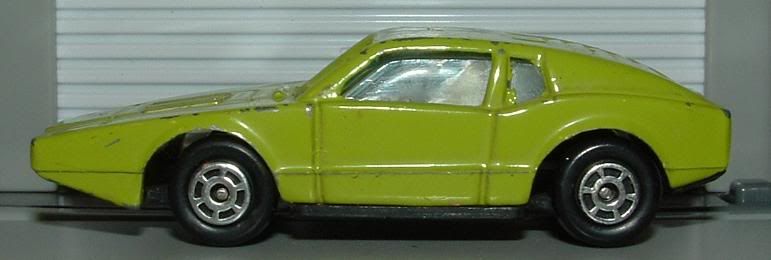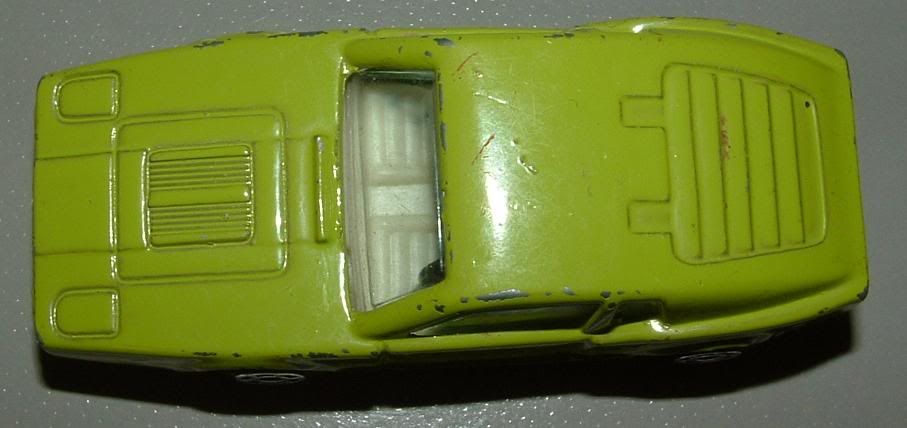
A blog focusing on 1/64 diecast from such popular brands as Hot Wheels, Matchbox, Johnny Lightning, M2 Machines, GreenLight, Tomica, Yat Ming, Majorette, MotorMax, Siku, Corgi, Guisval, Playart, Ertl, Zylmex, Racing Champions, & many more. Swifty's Garage features a daily Car Of The Day and news updates from your favorite brands!
Monday, May 2, 2011
Car Of The Day: May 2, 2011
Today's car of the day is Yat Ming's 1970 Saab Sonnet.
The Saab Sonett is an automobile manufactured between 1966 and 1974 by Saab Automobile AB of Sweden. Sonetts shared engines and other components with Saab 96s and 95s of the same era.
The first prototype, now known as the Sonett I, was a two-seat, open-top, lightweight roadster racer which, ten years later, evolved into the commercially-distributed Sonett models II, V4, and III.
For more information and pictures of the real car please visit: Saab Sonnet III
This little Saab (and I do mean "little"!) is a smaller copy of a similar vintage Matchbox casting.
The 1970 redesign of the Sonett V4, named the Sonett III, was initially undertaken by Sergio Coggiola, but Gunnar A. Sjögren altered it to fit the existing chassis without expensive manufacturing-line changes. Hinged rear-window glass replaced the Sonett II/V4 rear compartment hatch door. With the mandate for a "bulge-less" hood, the engine compartment opening evolved into a small front popup panel, resulting in more limited access than in the Sonett V4. Extensive engine work required the removal of the entire front hood section.
To help adapt the car to U.S. market tastes, the Sonett III featured a floor-mounted shifter (instead of the Sonett V4 column-mounted shifter) and optional dealer-installed air conditioning. Like the Opel GT, the Sonett III's hidden headlamps were operated manually using a lever. US safety regulations required new bumpers after 1972, significantly detracting from its Italian-inspired design.
While the 1970 and 1971 model years initially had the same 1500 cc Ford V4 engine as the Sonett V4, emission control requirements reduced the available horsepower. The 1972 to 1974 versions of the Sonett III used the 1700 cc Ford V4, but to meet increasingly strict Federal regulations, net power output remained the same as the 1500 cc engine, at 55 horsepower (41 kW). Still, the Sonett III accelerated from 0–100 km/h (0–63 mph) in 13 seconds, and—due to a higher differential gear ratio (42 teeth on the ring gear and 9 teeth on the pinion gear) than the standard 95/96 transmission (39:8)—achieved a top speed of 165 km/h (103 mph), aided by a low 0.31 drag coefficient.
Disappointing sales, especially during the 1973 oil crisis, lead Saab to end production in 1974. A total of 8,368 Sonett IIIs were manufactured between 1970 and 1974.
Subscribe to:
Post Comments (Atom)






No comments:
Post a Comment